2019-05-09 - Nº 210

Editorial
Esta é a Newsletter Nº 210 que se apresenta com o mesmo formato que as anteriores. Se gostar da Newsletter partilhe-a!
Todas as Newsletters encontram-se indexadas no link.
Esta Newsletter tem os seguintes tópicos:
Foi no longínquo dia 5 de Maio de 2015 que esta aventura começou... e já se passaram 4 anos. A newsletter do altLab está de parabéns. Tem sido uma jornada interessante e que tem trazido a este espaço um conjunto muito interessante de informação seja ela de cariz Cientifico/Tecnológico ou projectos curiosos que estão publicados na Internet, passando pelos e-books ou e-magazines que estão disponíveis gratuitamente para todos. Para já o formato da newsletter irá manter-se. Haverá algumas mudanças que futuramente revelarei.
Faz hoje anos que nascia, em 1746, Gaspard Monge. Este Matemático francês ficou conhecido pela sua elaboração da geometria descritiva. Embora fosse filho de um comerciante ambulante, aos 22 anos de idade, leccionava matemática na escola militar de Mézières e mais tarde tornou-se professor na École Polytechnique, que ajudou a fundar e a organizar. Ele desenvolveu a matemática de projectar figuras sólidas num plano (sobre o qual se baseia o desenho de engenharia moderno) seguindo uma sugestão da teoria (1738) de Frézier. Monge aplicou mais técnicas de análise à teoria da curvatura que mais tarde foi retomada no trabalho revolucionário de Georg Riemann sobre geometria e curvatura.
Faz também anos hoje que nascia, em 1845, Gustaf de Laval. Este cientista, engenheiro e inventor sueco foi pioneiro no desenvolvimento de turbinas de alta velocidade. Depois de ganhar o seu Ph.D. aos 27 anos, ele trabalhou como engenheiro técnico numa siderurgia na sua terra natal. Em 1877, ele começou a desenvolver um separador de creme centrífugo de alta velocidade, um avanço significativo na produção de manteiga. Ele aperfeiçoou uma máquina de ordenha a vácuo em 1913. Por volta de 1882, começou a trabalhar em turbinas a vapor e, em 1889, solicitou uma patente britânica para um tipo de impulso, com um jacto de vapor batendo num conjunto de lâminas na periferia de uma roda. O seu talento inventivo era amplo, e incluiu iluminação eléctrica, eletrometalurgia e aerodinâmica. Durante a sua vida, ele adquiriu 92 patentes suecas e fundou 37 empresas.
Faz igualmente anos hoje que nascia, em 1850, [Edward Weston](Edward Weston (chemist)). Este Engenheiro electrotécnico e industrial americano nascido na Grã-Bretanha fundou a Weston Electrical Instrument Company. Ele foi para a América como um jovem estudante de medicina em 1870. Nos anos seguintes, ele revolucionou a indústria de electro-galvanização inventando e fabricando um dínamo de galvanoplastia com muito sucesso, que superou em muito a eficiência das baterias de armazenamento. Ele patenteou o dínamo e um ânodo de níquel em 1875. A partir de então até cerca de 1917, Weston recebeu 334 patentes nos EUA. Após as primeiras experiências com projectos de lâmpadas incandescentes, ele destacou-se com a invenção e fabricação de uma série de instrumentos de medição electrónica de precisão.
Por fim, faz anos hoje que nascia, em 1927, Manfred Eigen. Este Físico e bioquímico alemão partilhou (com Ronald Norrish e George Porter) o Prémio Nobel de 1967 da Química “pelos seus estudos de reacções químicas extremamente rápidas, afectando o equilíbrio por meio de pulsos de energia muito curtos.” Em 1954, Eigen introduziu as técnicas de relaxamento para o estudo de reacções químicas extremamente rápidas (aquelas que levam menos de um milissegundo). O seu método geral era tomar uma solução em equilíbrio para uma dada temperatura e pressão. Se uma pequena perturbação fosse aplicada à solução, o equilíbrio seria muito brevemente destruído e um novo equilíbrio seria rapidamente alcançado. Eigen estudou exactamente o que aconteceu neste curto espaço de tempo por meio de espectroscopia de absorção.
Nesta semana que passou ficámos a saber que a Blue Origin planeia levar humanos à Lua. Embora Bezos não tenha declarado explicitamente que a Blue Origin planeia oferecer o seu novo veículo à NASA para a ambiciosa iniciativa da agência de pousar astronautas na Lua em 2024, uma descrição recém-publicada no site da empresa afirma que a variante da Blue Moon "foi projectada para pousar um veículo que nos permitirá levar novamente americanos à lua em 2024."
Também esta semana ficámos a saber que Jean-Jacques SAVIN, um aventureiro francês de 72 anos, chegou à ilha das caraíbas Martinica depois de cruzar com sucesso o Oceano Atlântico numa cápsula laranja em forma de barril. A jornada demorou 122 dias no mar a cápsula onde ele se encontrava viajou cerca de 4,500 km. O ex-pára-quedista militar passou mais de quatro meses no barril, com 3 m de comprimento e 2,10 m de largura.
Na Newsletter desta semana apresentamos diversos projetos de maker assim como alguns modelos 3D que poderão ser úteis. É apresentada a revista newelectronics de 23 de Abril.
 João Alves ([email protected])
João Alves ([email protected])
O conteúdo da Newsletter encontra-se sob a licença  Creative Commons Attribution-NonCommercial-ShareAlike 4.0 International License.
Creative Commons Attribution-NonCommercial-ShareAlike 4.0 International License.
Novidades da Semana

Blue Origin Unveils 'Blue Moon,' Its Big Lunar Lander
"Blue Origin is shooting for the moon! The private spaceflight company revealed the first life-size mockup of its new lunar lander, named "Blue Moon," here at the Washington Convention Center today (May 9). "This is an incredible vehicle, and it’s going to the moon," Blue Origin founder and chief executive Jeff Bezos told a room full of spectators after the curtain dropped to reveal the big, shiny spacecraft. Blue Moon is designed to carry rovers and other large payloads to the lunar surface, but it could also take astronauts to the moon, said Bezos, who also founded Amazon.com and is the richest person in the world. To modify Blue Moon for a crewed spaceflight, the company would top the spacecraft with an attachable, pressurized ascent vehicle. Before launching astronauts to the moon, Blue Origin would first test out the lunar lander with an uncrewed mission, Bezos said." [...]
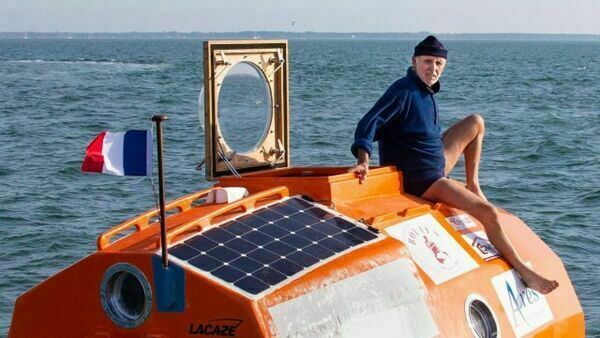
Jean-Jacques Savin: Frenchman completes Atlantic crossing in barrel
"A 72-year-old French adventurer has landed on the Caribbean island of Martinique after successfully crossing the Atlantic Ocean in a barrel-shaped orange capsule. Jean-Jacques Savin set off on his journey in late December from El Hierro in Spain's Canary Islands. He used ocean currents alone to propel the capsule across the Atlantic. Mr Savin declared his trip a success on 27 April, when he entered the Caribbean after 122 days at sea. The journey covered more than 4,500km (2,800 miles). He was brought to the shore of France's overseas department of Martinique on Thursday by a French tugboat after being picked up at sea by a Dutch oil tanker." [...]

Linux 5.1
"So it's a bit later in the day than I usually do this, just because I was waffling about the release. Partly because I got some small pull requests today, but mostly just because I wasn't looking forward to the timing of this upcoming 5.2 merge window. But the last-minute pull requests really weren't big enough to justify delaying things over, and hopefully the merge window timing won't be all that painful either. I just happen to have the college graduation of my oldest happen right smack dab in the middle of the upcoming merge window, so I might be effectively offline for a few days there. If worst comes to worst, I'll extend it to make it all work, but I don't think it will be needed. Anyway, on to 5.1 itself." [...]
Outras Notícias

STMicroelectronics' 650V High-Frequency IGBTs Boost Performance with Latest High-Speed Technology
"The STMicroelectronics HB2 650V IGBT series delivers efficiency and performance gains for medium- and high-speed applications such as PFC converters, welders, uninterruptible power supplies (UPS), and solar inverters, leveraging ST’s latest Trench Field Stop (TFS) technology. The series also includes automotive-eligible devices meeting AEC-Q101 Rev. D. STMicroelectronics’ 650V High-Frequency IGBTs Boost Performance with Latest High-Speed Technology Joining the STPOWER™ portfolio, the new HB2 series has outstanding conduction performance thanks to low VCEsat of 1.55V. At the same time, dynamic behavior is enhanced due to reduced gate charge that enables fast switching at low gate current. Outstanding thermal performance helps maximize reliability and power density, while the new products are also positioned as a very competitive choice in the market. The HB2 series IGBTs can be specified with either a full-rated or half-rated diode, or a protection diode to prevent accidental reverse bias, giving extra freedom to optimize the behavior for specific application needs." [...]

Open Source Release coming for Microsoft's Quantum Development Kit
"Our ambition is to make quantum computing more accessible so that developers can help solve some of the world’s most pressing challenges. The power to achieve that vision comes when every developer can collaborate, share code, and build upon each other’s work. The Microsoft Quantum Development Kit empowers developers at every stage of the quantum programming lifecycle – from learning basic quantum concepts to coding their first quantum application – to deliver real-world solutions with the help of our open-source samples and libraries. We are excited to announce that this summer we will open-source the Quantum Development Kit, including our Q# compiler and quantum simulators. By open-sourcing the Quantum Development Kit in GitHub, we enable developers to contribute alongside an emerging community of quantum computing programmers. We initiated this work last year when we open-sourced several features of the Quantum Development Kit, including the libraries and samples." [...]
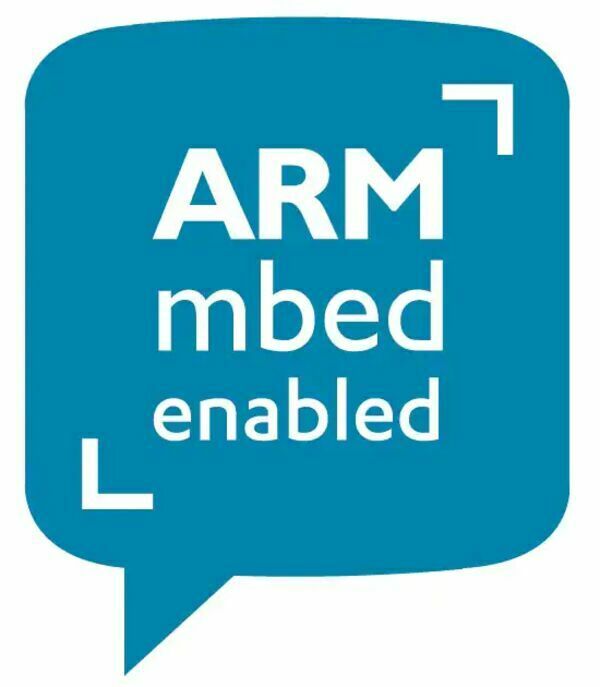
Mbed OS 5.12.3 released
"We are pleased to announce the Mbed OS 5.12.3 release is now available. This is the latest patch release based on the feature set that Mbed OS 5.12 introduces. Summary In this release we have fixed the following reported issues: 10498 FRDM-K66F Missing ADC pins mapping 10400 No flow-control on TARGET_LPC55S69 We have also: Added support for QSPI to Cypress targets Re-added IAR support for MIMXRT1050 Update wifi driver for rda target UNO_91H Activated FLASHIAP for STM32F303RE There are also a number of other fixes and code improvements. " [...]
Ciência e Tecnologia

New holographic technique opens the way for quantum computation
"EPFL physicists have developed a method based on the principles of holograms to capture 3D images of objects beyond the reach of light. Photography measures how much light of different color hits the photographic film. However, light is also a wave, and is therefore characterized by the phase. Phase specifies the position of a point within the wave cycle and correlates to depth of information, meaning that recording the phase of light scattered by an object can retrieve its full 3D shape, which cannot be obtained with a simple photograph. This is the basis of optical holography, popularized by fancy holograms in sci-fi movies like Star Wars. But the problem is that the spatial resolution of the photo/hologram is limited by the wavelength of light, around or just-below 1 μm (0.001 mm)." [...]

Quantum measurement could improve gravitational wave detection sensitivity
"Research could enable a new suite of experiments to measure quantum activity at room temperature. Minutes before dawn on Sept. 14, 2015, the Laser Interferometer Gravitational-wave Observatory (LIGO) became the first-ever instrument on Earth to directly detect a gravitational wave. This work, led by the LIGO Scientific Collaboration with prominent roles from MIT and Caltech, was the first confirmation of this consequence of Albert Einstein’s theory of general relativity — 100 years after he first predicted it. The groundbreaking detection represented an enormous step forward in the field of astrophysics. In the years since, scientists have striven to achieve even greater sensitivity in the LIGO detectors. New research has taken investigators one step closer to this goal." [...]
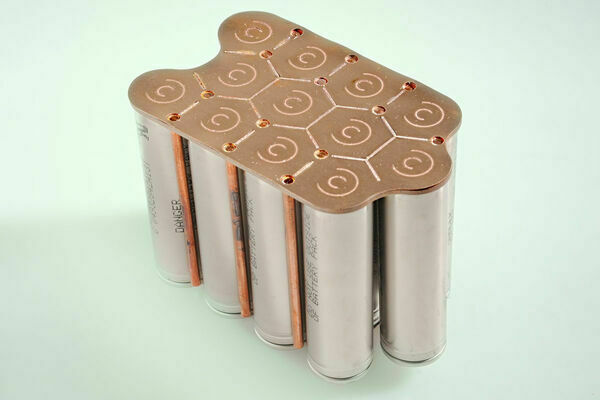
E-Mobility: Battery cells optimally welded with robots and lasers for electric racing cars
"No e-mobility without laser technology: this is one of the claims of LASER World of PHOTONICS 2019. In keeping with the theme of this year’s fair, the Fraunhofer Institute for Laser Technology ILT will be using Laser-Based Tape-Automated Bonding (LaserTAB) to demonstrate how even the most diverse battery cells and power electronics can be combined quickly, reliably and efficiently using robot-assisted laser micro welding. At the Fraunhofer joint booth 431, hall A2, visitors can admire the electric racing car "eace05" of the Ecurie Aix - Formula Student Team, RWTH Aachen. An excellent example for the use of laser technology in electromobility, containing laser-welded batteries as well as laser-cut CFK-components. Fueling the switch to e-mobility is far from simple – but fortunately the combined skills of industry and research are up to the challenge! That was the conclusion drawn by participants at the first Laser Symposium on Electromobility (LSE 2019) held by Fraunhofer ILT in February 2019." [...]
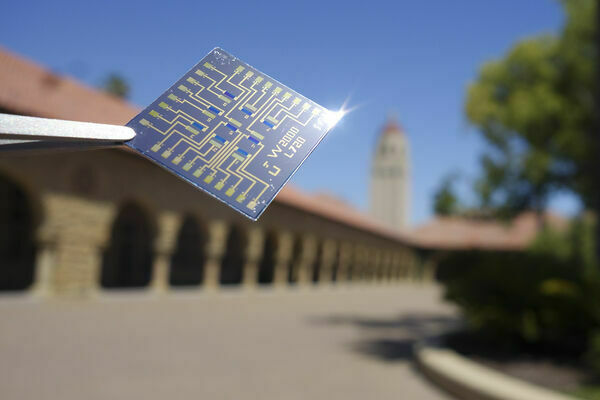
Stanford researchers' artificial synapse is fast, efficient and durable
"A battery-like device could act as an artificial synapse within computing systems intended to imitate the brain’s efficiency and ability to learn. The brain’s capacity for simultaneously learning and memorizing large amounts of information while requiring little energy has inspired an entire field to pursue brain-like – or neuromorphic – computers. Researchers at Stanford University and Sandia National Laboratories previously developed one portion of such a computer: a device that acts as an artificial synapse, mimicking the way neurons communicate in the brain. In a paper published online by the journal Science on April 25, the team reports that a prototype array of nine of these devices performed even better than expected in processing speed, energy efficiency, reproducibility and durability. Looking forward, the team members want to combine their artificial synapse with traditional electronics, which they hope could be a step toward supporting artificially intelligent learning on small devices. “If you have a memory system that can learn with the energy efficiency and speed that we’ve presented, then you can put that in a smartphone or laptop,” said Scott Keene, co-author of the paper and a graduate student in the lab of Alberto Salleo, professor of materials science and engineering at Stanford who is co-senior author." [...]

3D printing of metallic micro-objects
"3D printing has become an increasingly important production method. Researchers at ETH have now developed a new 3D printing technique by which micrometre-sized objects made of several metals can be produced with high spatial resolution. 3D printers can print almost anything these days, from production prototypes to artificial organs all the way to entire houses. Particularly on a microscopic scale, additive manufacturing, as 3D printing is also known, makes it possible to produce structures which cannot be realized using other techniques such as lithography. Up to now, a weak point of additive manufacturing has been the realization of metallic structures at the micrometre scale. A team of researchers at ETH Zurich led by Ralph Spolenak, professor at the Laboratory for Nanometallurgy of the Department of Materials, together with Dimos Poulikakos of the Department of Mechanical and Process Engineering as well as Renato Zenobi of the Department of Chemistry and Applied Biosciences, have now developed a technique that even allows one to print two metals at the same time with a spatial resolution of 250 nanometres." [...]
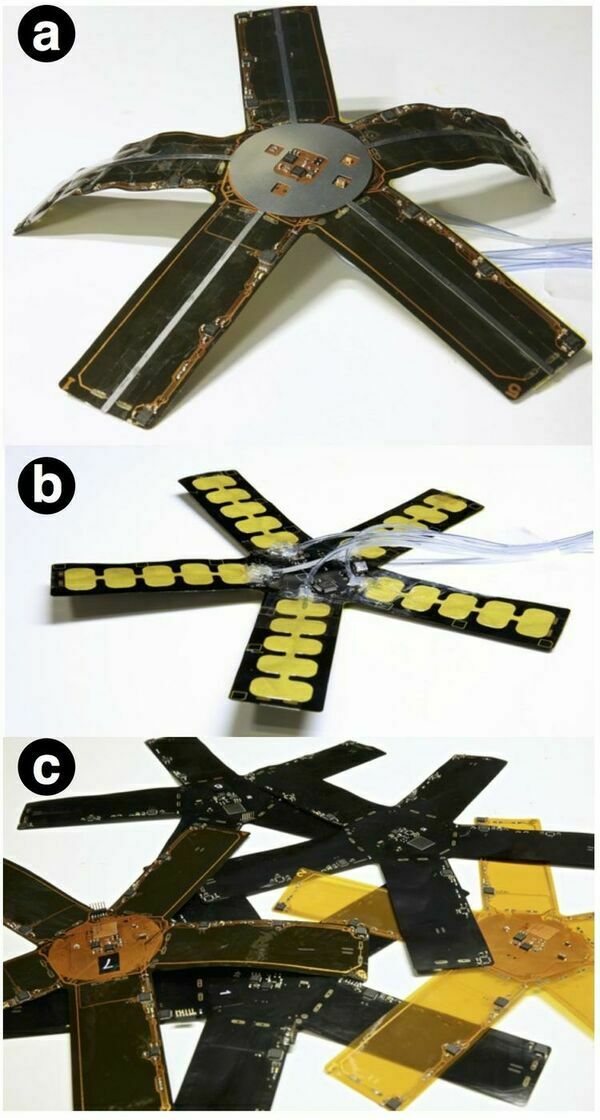
Circuit Robots: Mass manufacturing of self-actuating robots
"Integrating sensors and actuators using flexible electronics Currently, the manufacturing of self-actuating and self-sensing robots requires non-standard manufacturing techniques and assembly steps to integrate electrical and mechanical systems. In this work, we developed a novel manufacturing technique, where such robots can be produced at a flexible electronics factory. We developed the technique using standard industrial machines, processes, and materials. Using a lamination process, we were able to integrate air pouches or shape memory alloy (SMA) inside a polyamide-based flexible circuit to produce bending actuators. The bend angle of the actuators is sensed with a chain of inertial measurement units integrated on the actuator. Air-pouch actuators can produce a force of a 2.24N, and a maximum bend angle of 74 degrees." [...]

Unhackable: New chip stops attacks before they start
"A new computer processor architecture developed at the University of Michigan could usher in a future where computers proactively defend against threats, rendering the current electronic security model of bugs and patches obsolete. Called MORPHEUS, the chip blocks potential attacks by encrypting and randomly reshuffling key bits of its own code and data 20 times per second—infinitely faster than a human hacker can work and thousands of times faster than even the fastest electronic hacking techniques. “Today’s approach of eliminating security bugs one by one is a losing game,” said Todd Austin, U-M professor of computer science and engineering and a developer of the system. “People are constantly writing code, and as long as there is new code, there will be new bugs and security vulnerabilities. “With MORPHEUS, even if a hacker finds a bug, the information needed to exploit it vanishes 50 milliseconds later. It’s perhaps the closest thing to a future-proof secure system.” Austin and his colleagues have demonstrated a DARPA-funded prototype processor that successfully defended against every known variant of control-flow attack, one of hackers’ most dangerous and widely used techniques." [...]
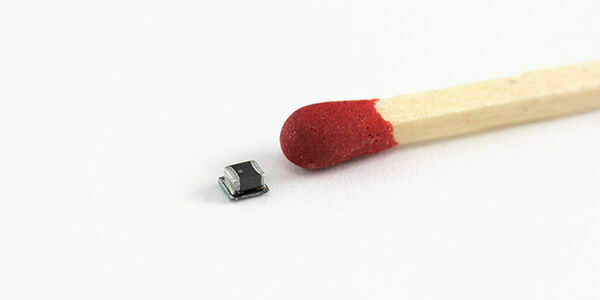
New technology behind the world's smallest power converter
"Five young DTU researchers have developed a new technology for producing a power converter which is shaped like a small cube measuring only a couple of millimetres on each side. The development of future mobile phones and laptops focuses on further decreasing the size while increasing the speed and adding new features. Today, a mobile phone is not just a phone but an entire communication and entertainment centre complete with camera, GPS, web browser, sensors, gaming centre, and much more. The energy source for mobile phones is either a USB cable plugged into a power grid or a battery. However, the electronic components for the different functions in the phones are powered by many different voltage domains. A power supply system therefore ensures that the voltage is converted from USB or battery to the many voltage domains." [...]
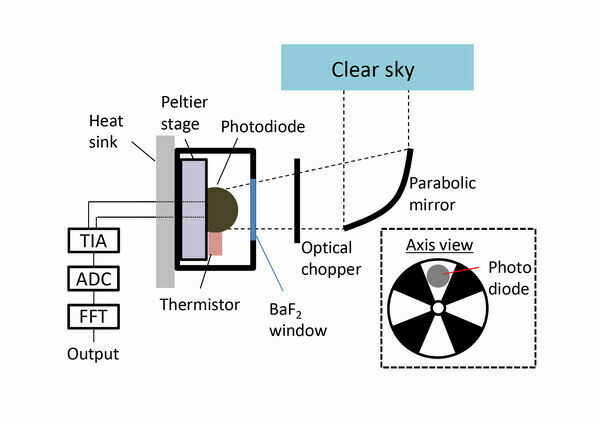
Experimental Device Generates Electricity From the Coldness of the Universe
"The obvious drawback of solar panels is that they require sunlight to generate electricity. Some have observed that for a device on Earth facing space, which has a frigid temperature, the chilling outflow of energy from the device can be harvested using the same kind of optoelectronic physics we have used to harness solar energy. New work, in a recent issue of Applied Physics Letters, from AIP Publishing, looks to provide a potential path to generating electricity like solar cells but that can power electronics at night. An international team of scientists has demonstrated for the first time that it is possible to generate a measurable amount of electricity in a diode directly from the coldness of the universe. The infrared semiconductor device faces the sky and uses the temperature difference between Earth and space to produce the electricity. “The vastness of the universe is a thermodynamic resource,” said Shanhui Fan, an author on the paper." [...]
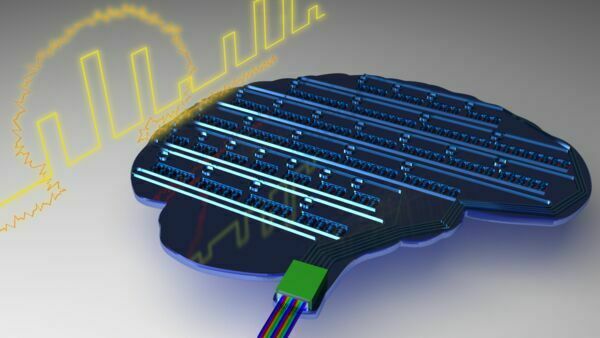
Researchers Take A Step Towards Light-based, Brain-like Computing Chip
"New light-based hardware which can store and process information in a similar way to the human brain / Study published in “Nature” journal. A technology that functions like a brain? In these times of artificial intelligence, this no longer seems so far-fetched – for example, when a mobile phone can recognise faces or languages. With more complex applications, however, computers still quickly come up against their own limitations. One of the reasons for this is that a computer traditionally has separate memory and processor units – the consequence of which is that all data have to be sent back and forth between the two. In this respect, the human brain is way ahead of even the most modern computers because it processes and stores information in the same place – in the synapses, or connections between neurons, of which there are a million-billion in the brain." [...]
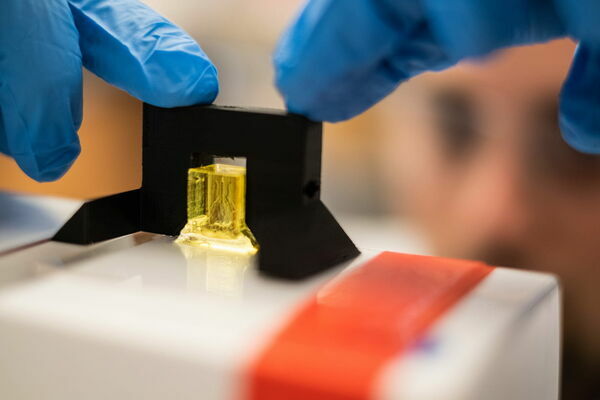
Organ bioprinting gets a breath of fresh air
"Organ bioprinting gets a breath of fresh air Bioengineers clear major hurdle on path to 3D printing replacement organs Bioengineers have cleared a major hurdle on the path to 3D printing replacement organs with a breakthrough technique for bioprinting tissues. The new innovation allows scientists to create exquisitely entangled vascular networks that mimic the body’s natural passageways for blood, air, lymph and other vital fluids. The research is featured on the cover of this week’s issue of Science. It includes a visually stunning proof-of-principle — a hydrogel model of a lung-mimicking air sac in which airways deliver oxygen to surrounding blood vessels. Also reported are experiments to implant bioprinted constructs containing liver cells into mice. The work was led by bioengineers Jordan Miller of Rice University and Kelly Stevens of the University of Washington (UW) and included 15 collaborators from Rice, UW, Duke University, Rowan University and Nervous System, a design firm in Somerville, Massachusetts." [...]
Modelos 3D
Com a disponibilidade de ferramentas que permitem dar azo a nossa imaginação na criação de peças 3D e espaços como o thingiverse para as publicar, esta rubrica apresenta alguns modelos selecionados que poderão ser úteis.
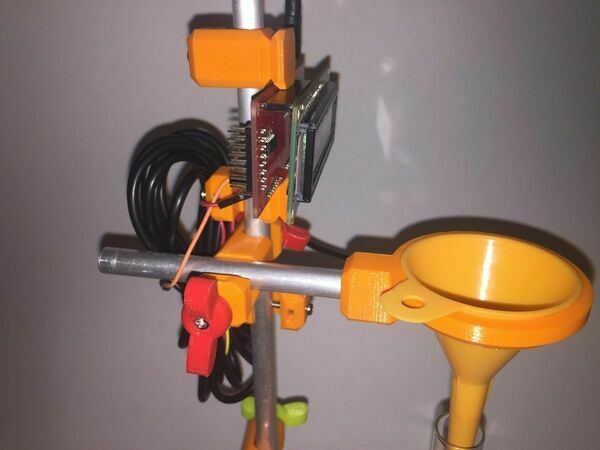
Stand, Clamps and Equipment Kit
"This has so many different uses not only in chemistry. This kit can be used in engineering, Stop motion, biology, manufacturing and many more. This system made to be easy, quick and flexible for any application. Why For a project, I need to mount a microscope camera over a PCB and did not want to make a one-off mount. I thought about other ways of making it then thought how chemistry uses a system with rods to mount to. Looking at chemistry kits, there were parts that were not there but would be useful." [...]

Customizable pegboard hooks
"A completely flexible pegboard hook generator. Peg hole size and spacing are customizable. Many hook parameters are customizable (see below for details) I've included the .scad file and individual stl files for each example. The examples were created for US pegboard (1" spacing). // Parameters: // height: radius of the ellipse which defines the protruding hook along the y axis. // width: diameter of the ellipse which defines the protruding hook along the x axis." [...]
Documentação
A documentação é parte essencial do processo de aprendizagem e a Internet além de artigos interessantes de explorar também tem alguma documentação em formato PDF interessante de ler. Todos os links aqui apresentados são para conteúdo disponibilizado livremente pelo editor do livro.
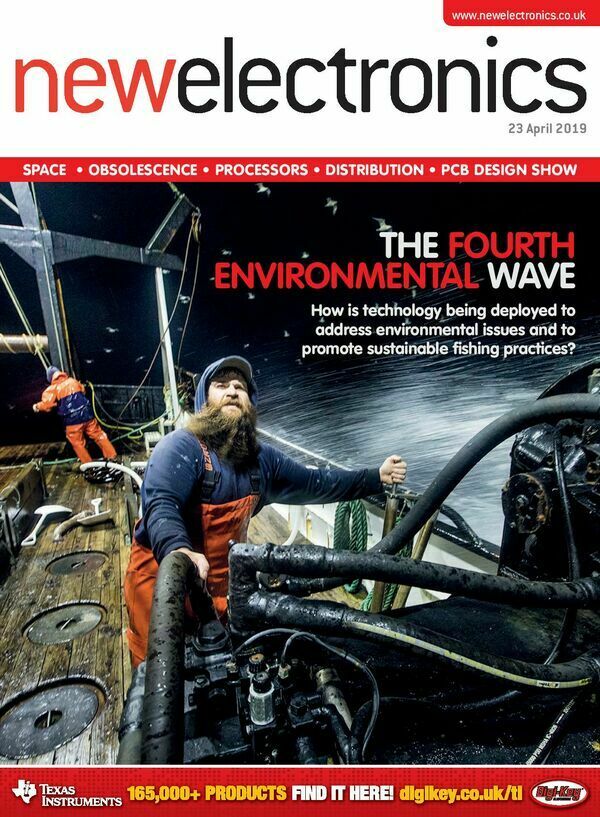
newelectronics 23 Abril 2019
"New Electronics is a fortnightly magazine focusing on technological innovation, news and the latest developments in the electronics sector. Downloadable as a digital page turner or pdf file, or offered as a hard copy, the New Electronics magazine is available in a format to suit you" [...]
Projetos Maker
Diversos Projetos interessantes.

Pickleball Machine Upgrade With Arduino
"I bought a pickleball machine to help me improve my game. I realized there were some improvements that I would like in my machine. One of the problems that I had involved the speed control. The speed dial is very sensitive which makes ball placement difficult. For example a BALL SPEED setting of 4.0 just gets the ball over the net, while a speed setting of 4.5 sends the ball to the baseline. So even though I have a speed dial that goes from 1 to 10, I have to work in the range of 4.0 to 4.5." [...]
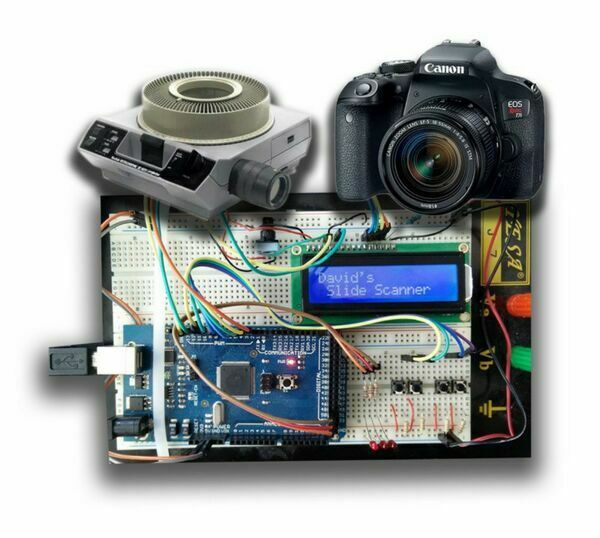
Kodak Slide Projector Scanner
"Use a Kodak projector and DSLR camera to automate digitizing slide photography Take an old Kodak slide projector, a digital camera, some electronic parts and connect it all up to a microcontroller to create a high throughput digital slide scanner. " [...]
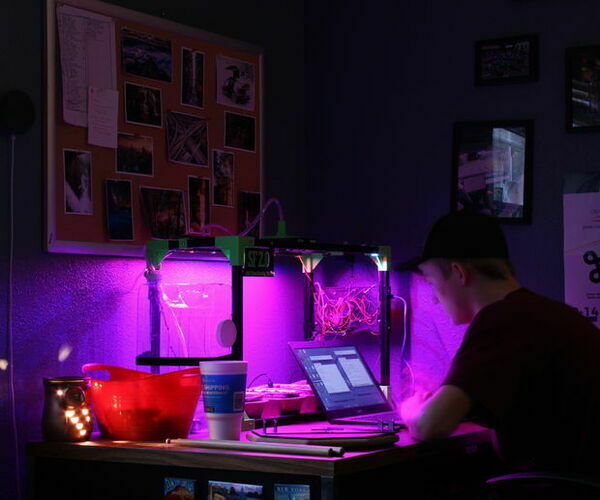
CNC Arduino Plant Growing Machine
"I designed a CNC Arduino Plant Watering machine for my local high school science and engineering fair. I ended up getting second place in the maths and engineering category, won $200 from the Missouri Society of Engineers, and was invited to compete in an international science fair in New York. With all that said this is not going to be a full Instructable of how to create this step by step. It is more of how I went about doing this along with tips to hopefully inspire others to want recreate my design and improve upon it. " [...]

Third Eye (Arduino Project)
"Imagine you want to go ghost hunting, but you don't exactly have any equipment other than a ouija board, of which a many of experienced hunters and psychics highly recommend you not to use, and your phone as an EVP recorder. Have you tried opening your third eye? How about making this product to help guide you towards that way. The Third Eye will help aid you seek out spirits using thermal imaging. Ghost hunters will typically use thermal imagery to find cold spots - an area of low temperature that allegedly indicates the presence of a ghost. IF you are not a ghost hunter, nor believe in ghosts, this product can also help in situations such as: Air quality - monitor which industrial smoke-stacks or household chimneys are in use." [...]

Mash Up Arduino Code Samples
"This tutorial walks through the process of combining Arduino sample sketches to make a working project prototype. Developing the code for your project can be the most intimidating part, especially if you havent done it a thousand times already. If you're a total Arduino newbie, try my free Arduino Class right here on Instructables. Let's dive in! " [...]

Diy Arduino Bluetooth Controlled Car
"Hello, Guys! In this instructable tutorial, I'm going to make an Arduino nano based smartphone (Bluetooth) controlled car. All we know that Arduino is an excellent prototyping platform, principally because it uses a friendly programming language and there are a lot of extra incredible components that provide us great experiences. We can integrate the Arduino with different shields or modules and build fantastic projects. In this project i will show you how use the Bluetooth module to control a car through commands coming from a smartphone. So This car could be controlled via Bluetooth using any Android phone or tablets." [...]
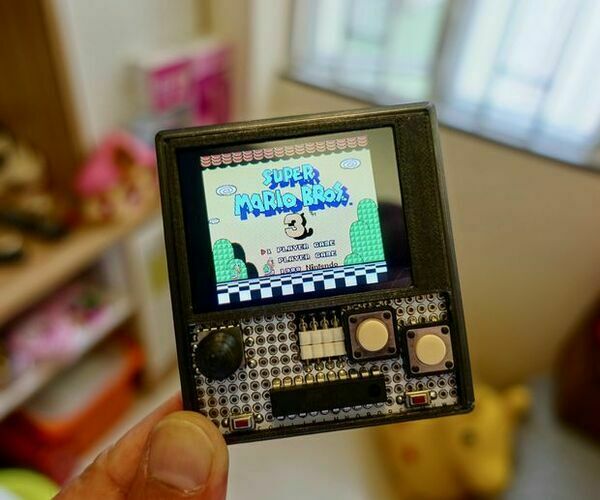
ESP32 Handheld Game Console
"This instructables show how to use a ESP32 and ATtiny861 to build a NES emulator game console. " [...]
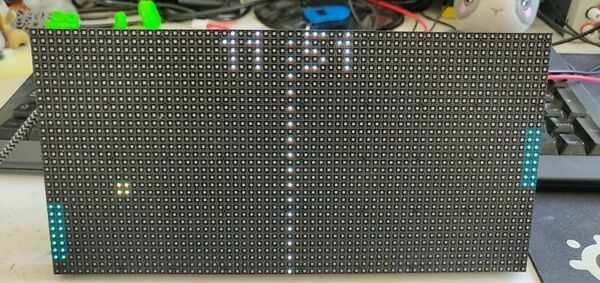
Pong-Like Retro Clock Using TinyGo and Microbit
"Use an RGB matrix and a micro:bit to display the time with an awesome game of PONG. Made with love and TinyGo. I felt in love instantly with this gorgeous RGB LED matrix panel and wanted to do something with it, and what better than an awesome PONG clock that I could hang on my wall? " [...]
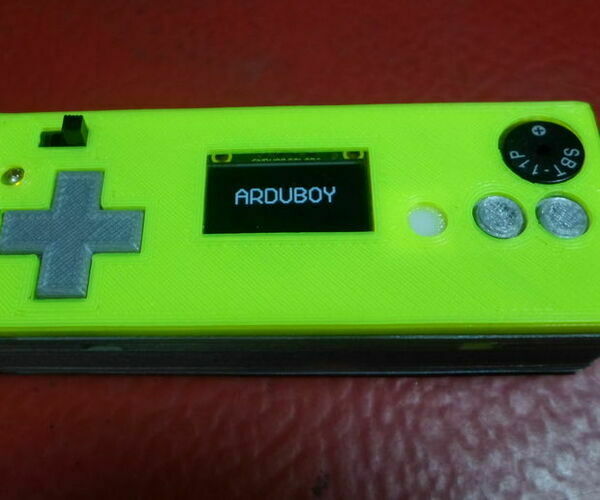
Arduboy Clone With Arduino Nano and I2C Oled Display
" A cheap version of the Arduboy clone with which you can play a number of original Arduboy games. Arduboy is a miniature game system the size of a credit card. It comes installed with a classic 8-bit game and can be reprogrammed from a library of open source games available online. Arduboy is open source so you can learn to code and create your own games.The original version is based on ATmega 32u4 microcontroller and 128x64 Pixels serial Oled display. The console whose construction is represented below is made up of Arduino Nano and the I2C version of the oled display which can be much easier to find at a lower price. You can download the necessary libraries and code at: https://github.com/harbaum/Arduboy2" [...]
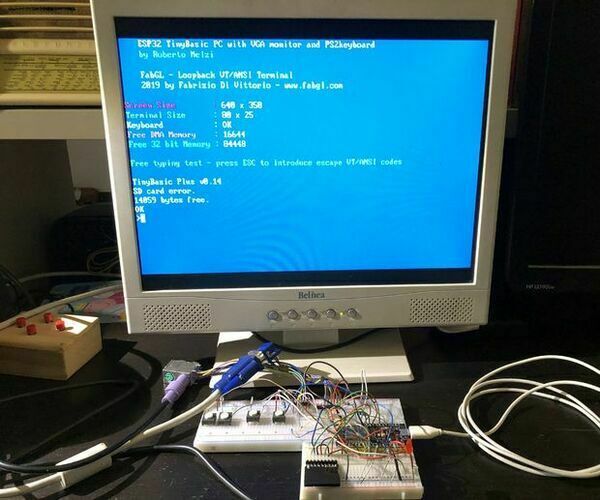
ESP32 Basic PC With VGA Output
"In this Instructable I am going to show how to build a simple retro style PC done with a single ESP32 and few other components. This PC runs Tiny Basic, a simplified dialect of BASIC, and generates the output for a VGA monitor. The resolution is 640x350 pixels, allowing 80x25 asci characters in 8 colors. A PS2 keyboards can be connected and used to write the code, allowing up to 14059 bytes of memory. The ESP32 I/O pins can be directly driven by dedicated BASIC commands. This project is made possible by the awesome ESP32 VGA library written by Fabrizio Di Vittorio." [...]

Solar Powered NodeMCU Weather Station
"In recent years, there has been a lot of buzz going on about having what used to be very mundane everyday household items become "smart" by being able to be connected to the internet and communicate with you or with other smart devices. This concept - more commonly referred to as the "Internet of Things" (or IOT) - has unleashed an avalanche of smart thermostats, front door locks and refrigerators - all with the ability to let you know whether you need milk or that you've left the back door open and now the cat has escaped and is terrorizing the neighborhood. Being someone who has made a career in the Information Technology field, I was starting to feel a wee bit out of the loop about these things - not a good place to be for any self-respecting IT guy. I could have just simply read up on IOT devices, but why waste a perfectly good excuse for a bit of puttering in the shop... You can literally build anything with a little electronic "LEGO". A quick search of the internet showed me many examples of people building their own IOT devices in such a way. One common thing that I found with these projects was that a lot of them used a small Arduino compatible device based on the ESP8266 board." [...]
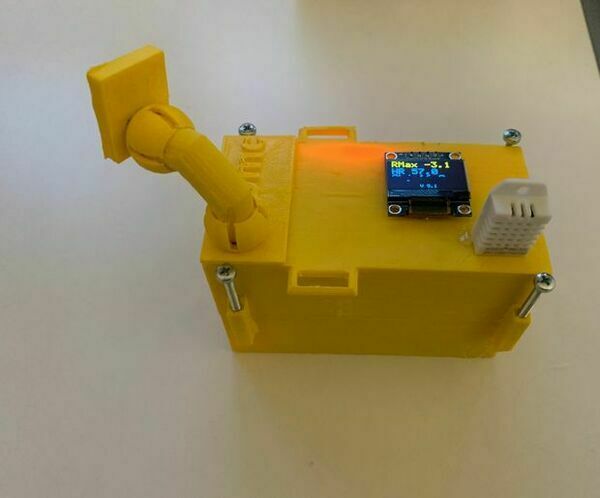
Condensation Risk Evaluator
"Hi everyone, I work as a builder even though I've been always really interested in new technologies. I've learned a little about 3d printing, Arduino and electronic issues reading a lot. I visit this web regularly so I would like to make my little contribution. In my job sometimes it is not so easy to know the reason of the moisture in a wall which causes unhealthy environments. This project will help us to distinguish between a water leak and a condensed moisture. To achieve it, I had the idea to monitor with a data logger the following values over a period of time : -Environmental humidity -Ambient temperature -Temperature of the wet area Those values allow us to realise if the temperature of the wet zone has been under the dew point." [...]

AnyKey protected bootloader
"This is a modified arduino caterina bootloader that allows itself to be locked and unlocked from the user space application (or any arduino sketch). This was developed to allow automatic upgrades to our AnyKey device running on kickstarter now https://www.kickstarter.com/projects/715415099/anykey-the-usb-password-key. But it's generic enough to be used on any arduino leonardo or atmega32u4 project as well. By setting the right EEPROM byte you can disable or temporarely enable or fully unlock all bootloader features like reading, writing to flash, eeprom, fuses etc. In this picture you see an example of an arduino being used as ISP to flash another similar arduino. By protecting the bootloader on the programmer ISP you can't accidentally loose your trusty programming device that allowed you to flash chips (see examples for full example isp sketch)." [...]
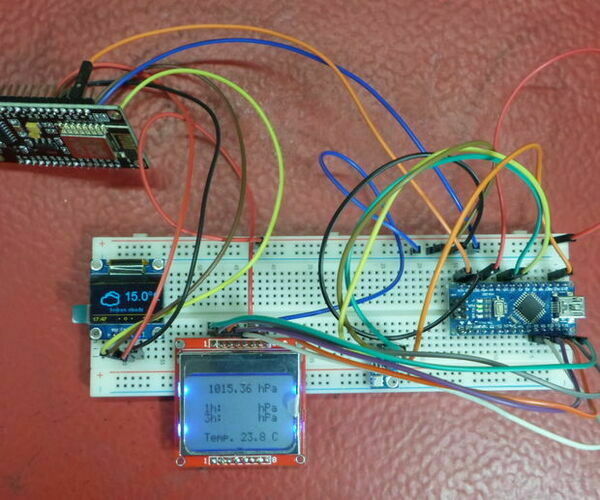
Arduino + ESP Weather Box
"A useful device that serves for a short-term local and three-day weather forecast This device consists of two independent assemblies in one box. One is the Arduino barometer with the BMP180 sensor, which contains a report of realtime, -1h and -3h difference in atmospheric pressure. These reports are particularly useful in the short term local weather forecast. Тhe code is taken from the "shelvin.de" web site, in which is entered the difference between the absolute and the relative atmospheric pressure for the given altitude in "druck_offset=" line on code. The results are presented on the N5110 LCD screen, which also shows the internal temperature. " [...]
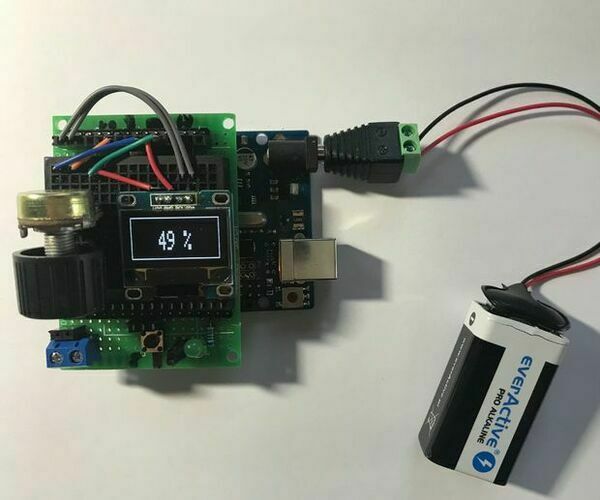
PWM Signal Generator
"Circuit is very easy to build all you need is: Arduino UNOOLED display moduleFew wires3mm LED8ohm speakerServo motor10k ohm pot3x10k ohm trimmer pots2x1uF caps" [...]
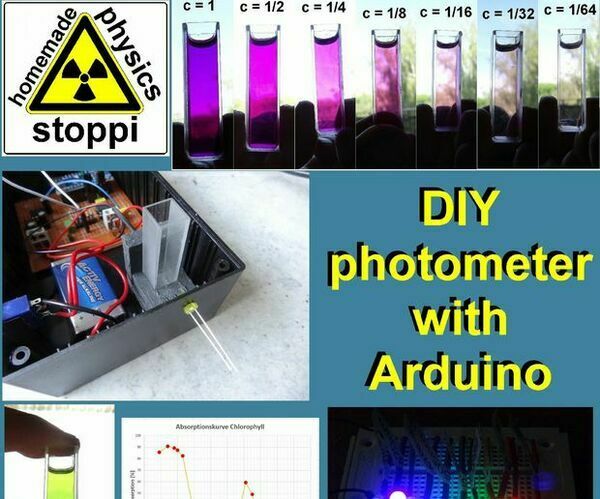
DIY LED-photometer With Arduino for Physics or Chemistry Lessons
"Liquids or other objects appear colored because theyreflect or transmit certain colors and in turn swallow (absorb) others. With a so-called photometer, those colors (wavelengths) can be determined, which are absorbed by liquids. The basic principle is simple: with a LED of a certain color you first shine through a cuvette filled with water or another solvent. A photodiode measures the incoming light intensity and converts it into a proportional voltage U0. This value is noted. Thereafter, a cuvette with the liquid to be examined is placed in the beam path and again measures the light intensity or voltage U." [...]

Pc-Privacy - Arduino Automated Privacy for Your Computer
"The Problem: If you live with other people or have your own office you might be familiar with the problem of people randomly appearing in your room while you are working on confidential data or just have some weird stuff open on the 2nd Screen from hours ago. Also if you live with other people and you are using any voice chat, chances are that someone slams open the door and makes noise or yells all over the place. This instructable offers a sensor based solution which can trigger any keycomb you want to be triggered in order to get some privacy or simply mute your microphone. " [...]

Arduino Digital Clock Synchronized by the 60Hz Power Line
"This Arduino based digital clock is synchronized by the 60Hz power line. It has a simple and inexpensive common anode 4 digit 7 segment display which shows hours and minutes. It uses a cross over detector to detect when the incoming 60Hz sine wave crosses the zero voltage point and derives a 60 Hz square wave. Over short time periods the frequency of the incoming sine wave from the power line may vary very slightly due to load, but over long periods of time it averages to 60Hz very precisely. We can take advantage of this to derive a timing source to synchronize our clock. " [...]
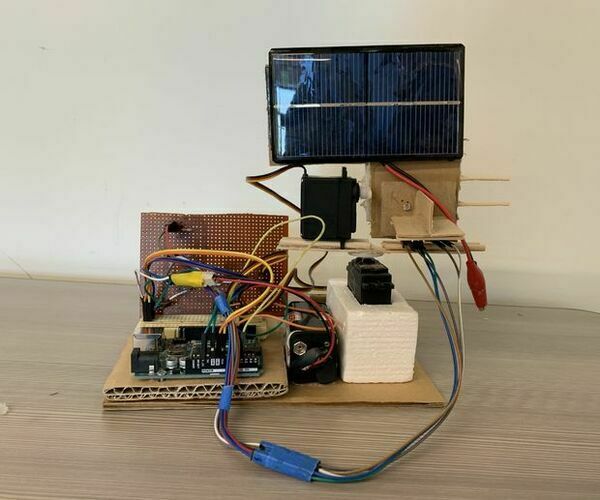
Building an Automatic Solar Tracker With Arduino UNO
"Solar energy is becoming more and more prevalent across the world. Currently, many methods are being researched to make solar panels output more energy, reducing our reliance on fossil fuels and coal. One way to do this is to have the panels move, always facing the sun in the sky. This allows optimal energy collection, making solar panels more efficient. This Instructable will look into how solar trackers work, and implement such a method into a solar tracker prototype using an Arduino UNO. " [...]

74HC393 Binary Counter
"The 74HC393 is a widely used ic chip. Its main function is as a binary counter. A binary counter is similar to a Decade counter such as the well known 4017 Johnson counter, but the 74HC393 counter functions slightly differently (as you will see next). " [...]
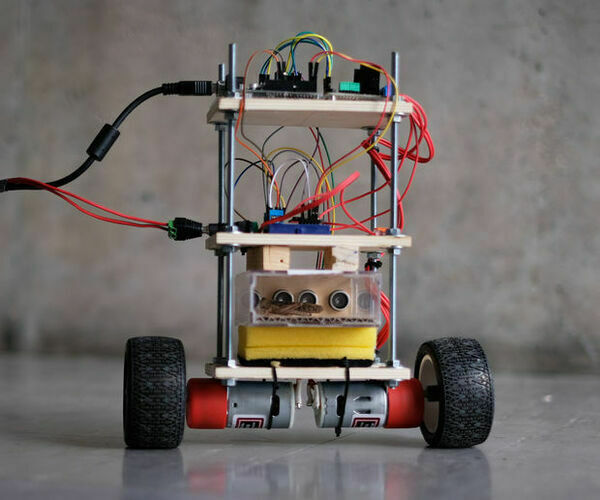
Augmented Arthropod - Self-Balancing Mech
"The year is 2048. Sixty percent of the human population is already augmented. Internally, through biological modifications, and externally, through modular exoskeletons. The biodiversity of the world shrinks as the gap between species grows. However, in the fringes of society, there is an idea permeating the minds of the populace. Some believe that bio-diversity is already a thing of the past." [...]

BotTender
"BotTender, a bartender assistant that pours the perfect shot! BotTender is an autonomous robot that is designed with the aim of automatizing bars. It is placed on top of the bar and detects the shot glasses in front of it. Once the glasses are detected, it approaches to the glass and asks for the customers to place their glasses on the robot. Then the perfect shot is waiting to be taken! When pouring is done, BotTender continues navigating along the bar until it detects the next customer with a glass." [...]
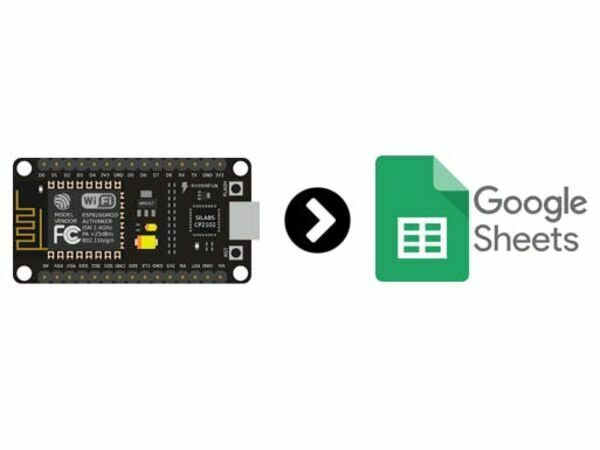
Sensor Data Upload to Google Sheets Through NodeMCU
"Upload any sensor data to Google Sheets through NodeMCU without the use of any thrid party software or applications. This tutorial will walk you through uploading sensor data on Google Sheets through NodeMCU. " [...]

How to Make Home Automation System Using Nodemcu ESP8266
"Today in this video tutorial I am going to show you Step by Step How to make a home automation control system using Nodemcu ESP8266 IoT Projects You, Will, Find Full Project Description & All Useful Material Including Circuit Diagram / Schematic Hardware / Component List Codes / Algorithm Datasheet Pin Configuration Etc" [...]

Using Home Assistant to Expand Your Home Automations
"In this tutorial, you'll learn everything you need to know to get started controlling your home with Home Assistant, an open source home automation hub that puts local control and privacy first, running off of a Raspberry Pi. In this tutorial we'll cover how to set up Home Assistant, and regardless of whether you created the devices yourself or purchased off the shelf IoT devices, get them working together in harmony. While this guide walks you through the setup of Home Assistant, this is not a tutorial about how to get the most out of Home Assistant (but a quick Google search for Home Assistant tutorials will provide you with endless links to do so). Installing Home Assistant To get started, we'll first need to install Home Assistant by downloading the image for your device. Home Assistant's installation page does a great job outlining how to flash the image to your SD card, but after you download your image you'll need to install Hass.io by connecting your SD card to your computer and flash the image using a program called balenaEtcher. Providing an Internet Connection Next we need to make sure your Pi will have an Internet connection." [...]
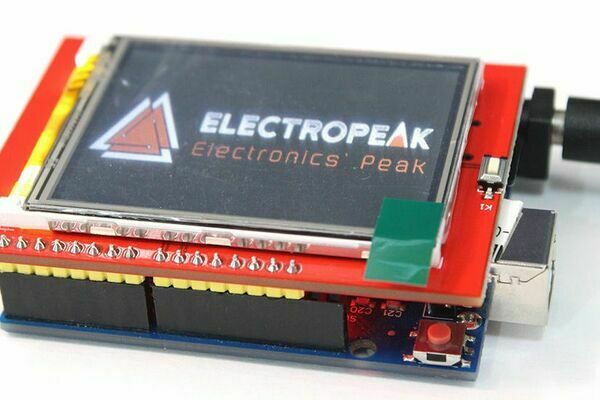
Arduino 2.4 Touch Screen LCD Shield Tutorial
"Overview In this tutorial, you will learn how to use and set up 2.4 Touch LCD Shield for Arduino. First, youll see some general information about this shield. And after learning how to set the shield up, youll see 3 practical projects. What You Will Learn: View text, writing and arbitrary geometric shapes with custom colors View high-quality BMP colored pictures create the Paint software" [...]

Arcade Button MIDI Keyboard
"This is a version 2.0 of one of my first forays into Arduino and DIY MIDI programming. I've developed my skills in prototyping and design so I thought it would be a good demonstration of process and progression. With a more informed design process I recycled the buttons from my first attempt and set off to build 2.0! " [...]
That's all Folks!


